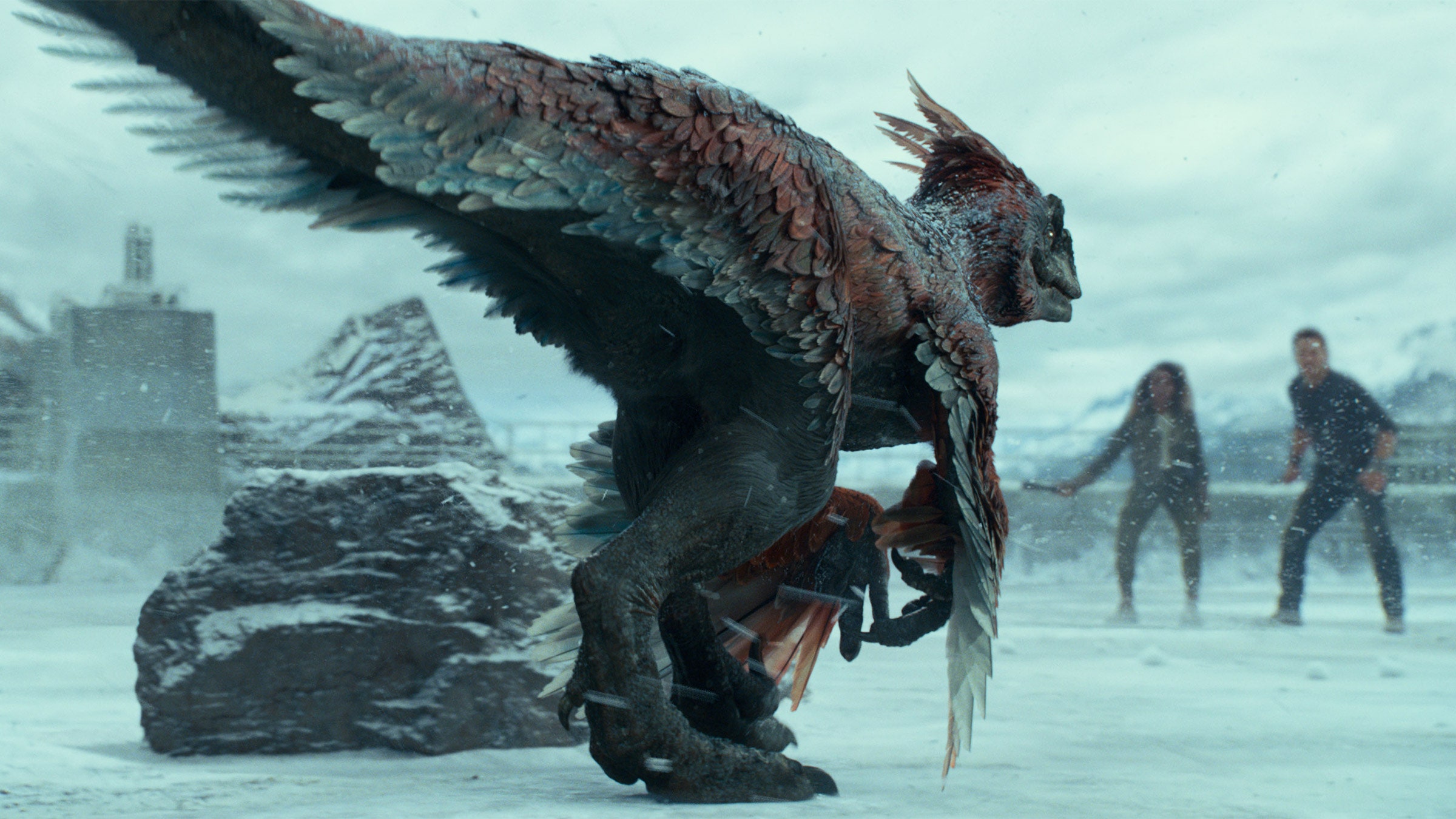Are Dinosaurs Real? Unearthing the Truth Behind the Myths
Yes, dinosaurs were real. They roamed the Earth during the Mesozoic Era.
Dinosaurs have captured human curiosity since the discovery of their fossils in the early 19th century. These fascinating prehistoric creatures inhabited our planet approximately 230 million years ago, dominating the land before their sudden extinction 65 million years ago. Scientific research and numerous fossil records confirm the existence of a diverse range of dinosaur species.
The study of these ancient beings, known as paleontology, offers insights into their behaviors, diets, and environments. The enduring intrigue surrounding dinosaurs is not only academic but has also permeated popular culture, inspiring movies, books, and exhibitions. Our understanding of these ancient reptiles continues to evolve with every new discovery, painting a clearer picture of a world where dinosaurs were once the dominant life form.

Dinosaur Discoveries: Tracing The Fossil Record
The discovery of dinosaur fossils has opened a window into an ancient world. Over centuries, paleontologists have unearthed bones that tell a story stretching back over 65 million years. These remnants of the past reveal the existence of creatures larger, smaller, and more diverse than any animal alive today. The journey to piece together the dinosaur puzzle is filled with groundbreaking moments and scientific techniques that allow us to estimate their age and lifestyle. Let’s explore some of the most significant findings and methods in understanding these magnificent beasts.
Paleontological Milestones: Key Finds That Changed The Game
- 1824: Megalosaurus discovered – The first scientifically described dinosaur.
- 1877: The Bone Wars – A period of intense fossil hunting that led to the discovery of 142 new species.
- 1905: Tyrannosaurus Rex unearthed – One of the largest land predators ever discovered.
- 1991: Giganotosaurus found – Larger than the T. rex, it shook the foundations of what we knew about predator size.
- 2019: Borealopelta markmitchelli – A dinosaur so well-preserved it still had skin and stomach contents.
Dating Techniques: How We Know Their Age
Determining the age of dinosaur fossils is crucial to understanding their existence. Scientists use various methods to date these prehistoric finds. Let’s break down some techniques used.
| Technique | Explanation |
|---|---|
| Radiometric Dating | Measuring radioactive isotopes to find the age of the surrounding rocks. |
| Stratigraphy | Analyzing the layers of rock where the fossil was found to determine its era. |
| Comparative Data | Comparing fossils to other known species or using their location to estimate age. |

Credit: www.wired.co.uk
Myths Versus Facts: Addressing Common Misconceptions
Dinosaurs fascinate people of all ages. Some stories are not true. Let’s discover the truth together.
The Great Lizard Hoax Debate
Many believe dinosaurs never existed. This is a myth. Scientists have found many dinosaur bones around the world.
| Myth | Fact |
|---|---|
| Dinosaurs are a hoax. | Extensive fossil records prove their existence. |
| Scientists create fossils for money. | Fossils are found and studied by experts globally. |
Clarifying Dinosaur Anatomy And Behavior
Dinosaurs were once real, living creatures. Uncover what science says about their bodies and how they lived.
- All dinosaurs were huge: Incorrect. Some were as small as chickens.
- Dinosaurs were slow: Some could run very fast.
- Dinosaurs were all meat-eaters: Many ate plants.
Understanding dinosaur anatomy helps us learn more. Exhibits show us life-sized models. You can see some dinosaurs had feathers.
Dinosaur behavior is fascinating. Some cared for their young. Others lived in groups. Fossils tell us these stories.
Evolutionary Tales: Connecting Dinosaurs To Modern-day Creatures
Dinosaurs once ruled the Earth, their massive forms and mystique still capture imaginations today. Yet these ancient giants are not entirely gone; their legacy lives on in the creatures we see around us. Dive into the evolutionary journey that links the thundering reptiles of old to the animals that roam, fly, and crawl on our planet today.
From Feathers To Flight: Birds As Living Dinosaurs
The tale of how dinosaurs took to the skies is a remarkable saga of evolution. The discovery of fossils with feather impressions paved the way for a groundbreaking realization: birds are the direct descendants of certain dinosaurs!
- The Archaeopteryx is often celebrated as the first bird.
- Modern birds exhibit behaviors and anatomies like their dinosaur ancestors.
- Many dinosaur species had feathers, not for flight initially, but possibly for warmth or display.
Reptilian Relations: The Dinosaurs Among Us
Certain reptiles today share direct ancestry with the dinosaurs of the past. These creatures provide invaluable insights into the dinosaur lineage. Crocodiles and birds are the closest living relatives to these ancient beasts.
| Dinosaur Trait | Reptilian Relative |
|---|---|
| Skin Texture | Crocodiles |
| Bone Structure | Turtles |
| Egg-laying | Snakes and Lizards |
These modern-day reptiles give us a window into the lives of dinosaurs with their survival tactics, social behaviors, and physical characteristics.

Credit: www.amazon.com
The Science Behind Extinction: What Happened To The Dinosaurs
Dinosaurs once roamed the Earth. Big or small, fierce or gentle, they were the reigning creatures for millions of years. Then, they vanished. Scientists dig deep into Earth’s crust searching for answers.
The Asteroid Impact Theory: A Catastrophic End
An asteroid about 6 miles wide struck Earth about 66 million years ago. This colossal crash caused fires, tsunamis, and dark, cold years. Plants and animals struggled to survive. A layer of Iridium, a rare metal on Earth, marks this historic event.
Alternative Theories And Ongoing Debates
While the asteroid impact holds strong evidence, other theories persist. Volcanic activity, climate change, and disease are other suspects in this prehistoric mystery.
- Massive volcanoes in India: Some say the Deccan Traps oozed enough lava to trigger extinctions.
- Gradual climate shift: Others argue climate change weakened dinosaur populations over time.
- Deadly germs: Could disease have wiped the dinosaurs from Earth?
Scientists debate how each factor played a part. Research continues, uncovering new clues from rock and bone.
Fostering Public Interest: Dinosaurs In Pop Culture
Dinosaurs have captured the imagination of the public for generations. Their majestic size, mysterious extinction, and otherworldly appearance stir a fascination that transcends borders and ages. Pop culture plays a pivotal role in maintaining this intrigue. Let’s dive into how cinematic experiences and educational endeavors continue to keep our enthusiasm for these prehistoric giants alive and roaring.
Subheading: The Silver Screen: How Hollywood Shapes Our ViewsThe Silver Screen: How Hollywood Shapes Our Views
Films transport us back millions of years, showcasing dinosaurs in all their glory. They give us a window into the Jurassic world, albeit a dramatized one. Directors and animators spend countless hours ensuring these ancient beasts come to life on the big screen. This exposure has an immense impact on how we perceive and appreciate these creatures.
- “Jurassic Park” – A film that made dinosaurs household names.
- “The Land Before Time” – A charming portrayal of dinosaur friendships.
- “Godzilla” – Blends dinosaurs with the monster genre.
Educational Impact: Museums And Interactive Exhibits
Museums serve as gateways to the past. They provide an authentic encounter with dinosaur bones and fossils. Interactive exhibits turn learning into an adventure for all ages. Parents and teachers often leverage these resources to spark curiosity in young minds.
- Natural history museums with dinosaur skeletons.
- Traveling exhibits with life-sized models.
- Hands-on fossil digs for aspiring paleontologists.
Future Of Dinosaur Research: What Lies Ahead
The study of dinosaurs never ceases to amaze! With new discoveries around every corner, the field of dinosaur research stands on the brink of exciting advancements. Scientists and enthusiasts alike look forward to revolutionary insights. We stand ready to unearth the secrets buried for millions of years.
New Technologies In Paleontology
New technologies are transforming the way scientists study dinosaurs. These tools are helping researchers make groundbreaking discoveries.
- Laser scanning reveals fossil details.
- CT imaging allows us to peer inside fossils.
- 3D printing brings dinosaurs to life in models.
With technology advancing, who knows what we will find next? Paleontology is evolving, and the future looks bright.
Unsolved Mysteries: The Quest For Knowledge Continues
Even with progress, many mysteries remain unsolved.
| Dinosaur Mystery | Why It’s Intriguing |
|---|---|
| Dinosaur coloration | We can only guess what colors they were. |
| Social behavior | How did they interact in groups? |
| Extinction causes | What truly happened 65 million years ago? |
Researchers tirelessly pursue these questions. Each day could bring a new piece to the puzzle.

Credit: www.youtube.com
Conclusion
As we journey back through the ages, the existence of dinosaurs is an undeniable reality, chiseled into the very bedrock of our Earth’s history. Through fossil records and scientific study, these magnificent creatures have been resurrected from extinction to fuel our imagination and knowledge.
Let’s embrace their story, forever etched in time, as a testament to life’s evolving saga.


